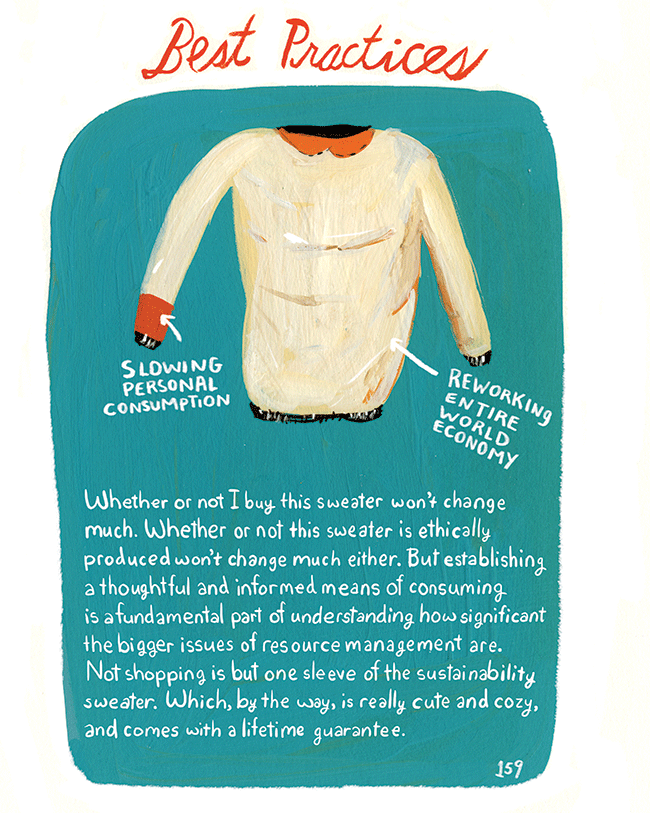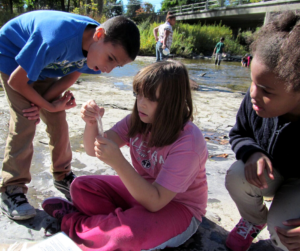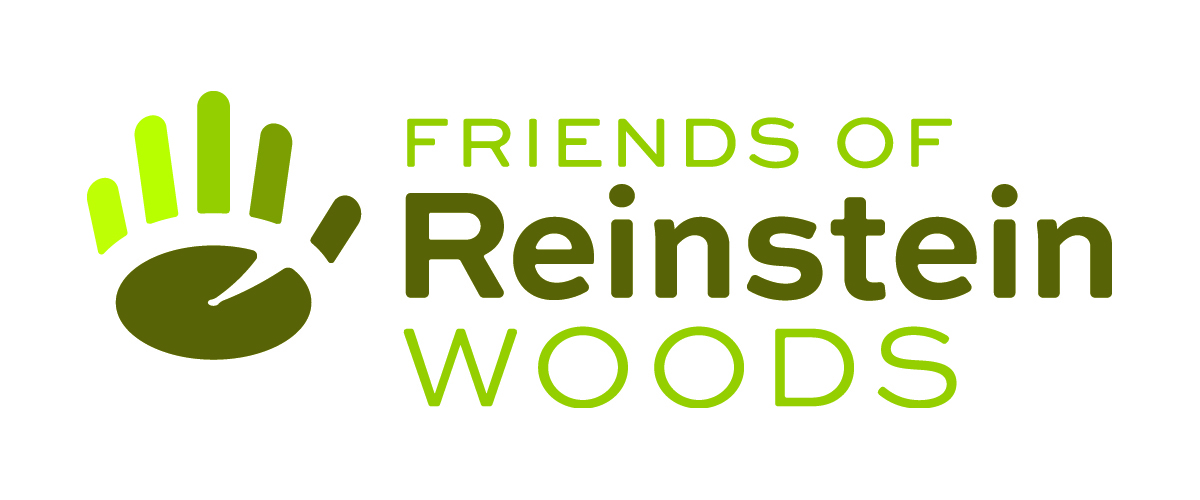All posts by Reinstein Woods
Animals Preparing for Winter
Animals Preparing for Winter
Autumn brings shorter hours of daylight, cooler temperatures, and falling leaves. These changes are a signal to animals. Animals have different strategies and adaptations to prepare for the coming winter. Some animals will migrate, some sleep or hibernate, while others stay active. Enjoy this video created by Mike Adriaansen that reveals how local animals prepare for winter.
Friends of Reinstein Seeking Development Manager
Friends of Reinstein Woods is seeking an energetic Development Manager to work closely with staff and volunteers to promote the long-term financial well-being of Friends of Reinstein Woods.
This is a full-time position. Occasional weekend and evening hours related to special events required. Resumes are being accepted until November 4, 2020. For more details and how to apply, see the job description here.
Sustainability Challenge Day 5
Cozy up to Sustainability

The Buyerarchy of Needs:
 option, you may find other ways to fulfill your needs that have financial benefits for you, and also are better for the planet and your community.
option, you may find other ways to fulfill your needs that have financial benefits for you, and also are better for the planet and your community.
Pledge to try:
Use What You Have: This can be hard to do if an item is broken. In non-COVID times, you could go to a Dare to Repair Cafe, but there are other options. Online services like Angies List and Yelp suggest local repair shops for everything from shoes to clothing to bicycles. (My mom recently had new soles put on her favorite pair of boat shoes, which brought her much joy.) You can also search the all-knowing internet for directions or videos on how to repair things. My husband successfully repaired our microwave handle by following an online video!
Big Step: Pledge to Buy Thoughtfully:
Day 5 Check-in:
A Look Ahead:
Sustainability Challenge Day 4
We the People…
You may be thinking: “I always vote, but my vote doesn’t matter much because of where I live.” You may also be aware that climate change rarely makes the list of issues that voters cite as their reason to vote. There is hope: research shows that a lot of people care about climate change, but they often don’t vote. However, there are ways to motivate them, and that’s where you come in.
To Do Right Now: Register
Not a New York State resident? You can find how to register in other states here.
I’m Registered, Now What?
To decide who to vote for, you can explore the presidential candidates’ energy and environmental platforms. The League of Conservation Voters provides a scorecard where you can look up how your members of Congress voted on environmental proposals. What about local races? You can find out who will be on your ballot (note- you can skip giving your email address), and then click on those candidates to find out more, including how to contact their office. If they haven’t taken positions on environmental policies, call their office and ask what they are doing/plan to do to make climate change a policy priority.
Big Step: Get Others to Vote
You probably have a friend on Facebook, Twitter, LinkedIn or Instagram (or if you’re like me, in your old-fashioned address book) who lives in a swing state. Once you’ve explored the national platforms, share your views (and information on how to register to vote) with them.
Studies show that receiving a personal letter makes it more likely that a person will vote, so dust off that stationery in your desk drawer and send a few notes! With everyone craving connections right now, your old friends will probably appreciate it!
One Last Important Step…
“We do not have government by the majority. We have government by the majority who participate.” – Thomas Jefferson
A Look Ahead:
Sustainability Challenge Day 3
Rev up (or down) your engine for Day 3!
Welcome to Climate Week; well, Climate Week NYC anyway. While the UN postponed what would normally be a world-wide week of climate events due to the pandemic, climate change effects (including in New York State) aren’t taking a year off. And neither are you!
When you took the ecological footprint quiz, you may have discovered that transportation is the biggest part of your personal carbon emissions. It’s also the biggest source of NYS greenhouse gas emissions, accounting for more than electricity generation, waste, refrigerants, and agriculture combined.
Go Car Free For Climate!
Big Step: Change WHAT You Drive
Already Doing This? Take a Small Step: Change HOW You Drive
A Look Ahead:
Sustainability Challenge Day 2:
Our House is on Fire…
Explore:
Already Doing This?
Small Step:
A Look Ahead:
Ruby-Throated Hummingbirds in Your Backyard
Virtual Volunteer Appreciation Picnic
We appreciate all of the hard work our Volunteers have done over the years and continue to do at Reinstein Woods. We would normally have our Volunteer Appreciation Picnic at this time of the summer. We are going virtual this year. Please enjoy the Virtual Volunteer Appreciation Picnic video below created by Ginger. Volunteers are welcome to make a dish to enjoy while watching the video.
Watch House Wrens Build Their Nest
House wrens have short wings, a curved beak, and a long tail that is often raised. They also have faint barring on their wings. They have a constant bubbling call, 9 to 11 times per minute during the breeding season. This bird prefers open forests and forest edges, and is also common in backyards. House wrens are cavity nesters, nesting in old woodpecker holes or bird houses. Males build several nests to entice a mate. In Western New York they begin building their nests in the middle of May and lay eggs in early June. Their nest is a built-up pile of sticks with a cup lined with feathers, grasses, and spider egg sacks. Their eggs are just over a half inch long and are usually pinkish white with reddish brown blotches. The female will incubate the eggs for 12-15 days. Both parents feed the nestlings. Baby house wrens aren’t picky eaters. Their parents bring them spiders, harvestmen, caterpillars, centipedes, moths, worms, potato bugs, crane flies, and more. Not only do they feed the huge appetites of these young birds, but they also remove their waste. The baby house wrens are very vocal once the parent enters the cavity with food. Fledglings will leave the nest between 12-18 days after hatching. House wrens are noisy little birds with a huge appetite for insects. A birdhouse and brush pile are all you need to attract this cavity nester.
Reinstein Woods Receives Watershed STEM Grant
Program Will Benefit Maryvale, Buffalo After-School Programs
Friends of Reins tein Woods has received a $57,325 grant to support a new “Watershed STEM in the Schoolyard” program, one of 29 Watershed STEM (science, technology, engineering and mathematics) Education Partnership Grants awarded across the country. The North American Association for Environmental Education (NAAEE) awarded the grant in partnership with the National Oceanic and Atmospheric Administration (NOAA) and the U.S. Department of Education.
tein Woods has received a $57,325 grant to support a new “Watershed STEM in the Schoolyard” program, one of 29 Watershed STEM (science, technology, engineering and mathematics) Education Partnership Grants awarded across the country. The North American Association for Environmental Education (NAAEE) awarded the grant in partnership with the National Oceanic and Atmospheric Administration (NOAA) and the U.S. Department of Education.
Starting in Fall 2020, Reinstein Woods will engage students and educators at 21st Century Community Learning Centers (21st CCLC)at Maryvale Intermediate School and Buffalo Public Schools 45 and 93. These learning centers provide academic enrichment opportunities during non-school hours for children, particularly students who attend high-poverty and low-performing schools. The centers help students meet state and local standards in core academic subjects while providing enrichment activities that complement their regular academic programs.
In the “Watershed STEM in the Schoolyard” program, students in grades 4-5 will collect weather and water quality data, explore STEM careers, and complete stewardship projects in their local watershed. The program is designed to develop students’ environmental literacy and leadership skills as they improve their communities.
Additionally, in partnership with the New York State Department of Environmental Conservation (DEC), Reinstein Woods will train staff at each site to conduct water-related activities appropriate for an after-school setting. The program will be tailored to meet evolving partner and community needs at each site.
“Water flows through our communities often unnoticed, and yet that water is vital to all living things,” said Meaghan Boice-Green, DEC Education Center Director at Reinstein Woods. “We are excited that this partnership will connect area educators and students to their local water resources in a fun and engaging way.”
Friends of Reinstein Woods President Terrence Boyle said, “All students should take part in Meaningful Watershed Educational Experiences at some point in their childhood. These experiences go beyond normal classroom learning to empower students to take meaningful action to protect water quality. Above all, it will encourage them to pursue STEM careers.”
Diantha Watts, Executive Director of Buffalo State’s Educational Pipelines Initiative Office said, “We are thrilled to have our students at International School #45 engaged in science programming that will stress literacy and math skills while encouraging parent involvement. Moreover, the professional development training will help our instructors make better use of our outdoor spaces for learning and fun.”
Kim Luce, Vice President of School-based Services at Best Self Behavioral Health echoes that excitement, adding “Southside Elementary is located adjacent to the Buffalo River. This program will provide place-based STEM learning that complements our programming and is relevant to our students.”
Elizabeth Giangreco, Assistant Superintendent at the Maryvale School District states, “We are pleased to partner for the first time with Reinstein Woods, which is only five miles from our school. We are eager to learn more about how we can use the outdoor space in our schoolyard and help our students discover how to care for their local environment.”
The Watershed STEM Education Partnership Grants are part of eeBLUE, NAAEE’s effort to build collaborative partnerships that support the mutual STEM education goals of NOAA and the U.S. Department of Education. Funding for these grants is provided by the U.S. Department of Education and administered by NAAEE.

